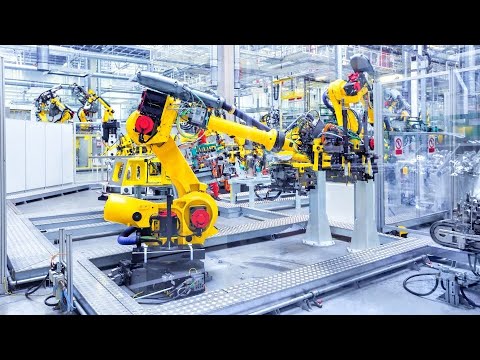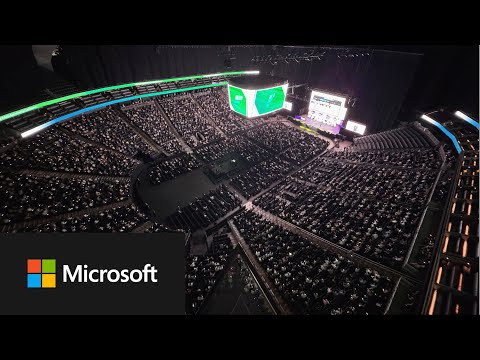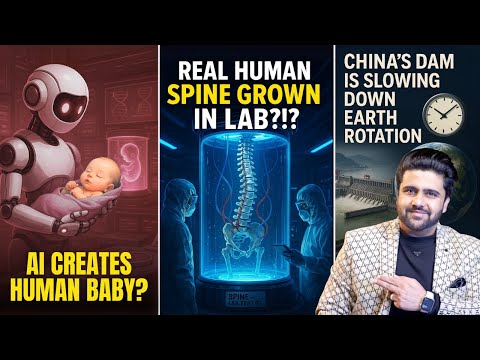Isolation in Industrial Robot Systems

hello welcome to the training isolation and Industrial robot systems my name is Tobias putz and I'm working as a systems engineer in the Industrial Systems group of Texas Instruments today's training will cover the following agenda first we will talk about isolation Basics and isolation Technologies next section will be about different types of robots used today the last section will be about isolation industrial robot systems isolation Basics and isolation Technologies what does isolation really mean I don't want to go too much into detail but in general isolation means transportating data or as well power between two electric systems with different electric potential the reason to isolate is to prevent DC or uncontrolled transient currents from flowing between the two why is it needed isolation is needed to protect from or safely withstand high voltages that would damage equipment or harm humans it's also needed to tolerate large ground potential differences and disruptive ground Loops in circuits that have high energy or separated by large distances last isolation is needed to communicate reliably with high side components in high voltage motor Drive systems like we have them in industrial robots some more Basics isolation versus insulation often these two terms are mixed up but isolation refers to the separation of systems with different voltage levels itself while insulation refers to the material that is used in the thickness of the material there are different levels of isolation functional basic supplementary double and reinforced functional isolation just refers to the general isolation between the two systems basic already protect against electric shock additional isolation added to the basic isolation results in double isolation and reinforced isolation is a single system but the rating is equal to double isolation an example for a supplementary isolation would be the coating of a transformer isolation is covered in different standards and Norms there are one for optical and magnetic capacitors there are different Technologies for isolation the three most common Optical capacitive and inductive Optical isolation works as following by applying a bias voltage across an LED light is emitted and then detected across a barrier so the signal is decoupled from the current positive isolation uses the physical plate separation of the capacitor combined with the circuit that has different stages like in RC integrator a comparator and flip flops to extract the signal information inductive isolation uses two coils which are placed next to each other then an ac voltage is applied across one coil and the verifying electric field creates a magnetic field which in turn induces an electric field and therefore current in the secondary coil all of the technologies have different advantages and disadvantages an advantage of the optical isolation is that it's immune to electric and magnetic fields but the LED suffers from degradation over lifetime the positive isolation can be made very space optimized however it needs additional circuitry which is more complex compared to other isolation Technologies last inductive isolation can be made very efficient however it is susceptible to magnetic fields TI uses capacitive isolation and achieves a superior performance with those gi's reinforce isolators use a specific architecture with two capacitors in series this results in a combined insulation of 27 micrometer the material being used is silicon dioxide it has a breakdown voltage of 500 to 800 volts per micrometer the ti devices have a high voltage rating of 5.7 kilowatt RMS and are rated for a working voltage of 1.5 kilowatt RMS for over 40 years furthermore they have a low current consumption and signal is transferred very quickly within a few nanoseconds what kinds of robots are there if we want to split robotics into different types of robots first they are the industrial robots shown on the left side and that's where robots refers to multi-access Scara Cartesian Delta collaborative or controlled robots the control cabinet is needed for every industrial robot normally it is located underneath the robot or is placed next to the robot somewhere in the system next we do have Logistics robots Logistics robots can be as something like a shuttle an agv or a shelf robot or just picking things in a pharmacy for example Logistics robots are often operating within a warehouse they are used to carry objects around and need to have sensors for location and mapping as well for environmental sensing in case humans are around or as well to avoid bumping into any other objects fast we do a service robots which can be things like a lawnmower vacuum cleaner or pool cleaner this training will focus on Industrial robots so those would be the ones on the left side industrial robots are normally fixed to a position and they are designed to perform repetitive tasks quickly and highly accurate the subfamily of the industrial robots is the collaborative robots which are becoming more and more important these are designed to interact with humans to ensure a safe collaboration between the robot and the human these robots have a lot of sensors around so that in case they bump against an object they automatically stop operating until they are turned on again isolation and Industrial robot systems typical industrial robot system is shown on the upper right but this picture just shows a typical robot in a factory with the robot arm however there are some things missing the block diagram shows the main parts of an industrial robot system however very simplified first of all we do have the robot controller in the middle the robot controller is like the main Computing unit of the robot it is connected to an access Drive which is controlling an inverter which is connected to the motor furthermore to the robot controller this can be an HMI connected to supply the motors of the robot arm we do have a rectifier and we have the inverter last the robot controller is connected to an upper control layer like a PLC the way you can think of this is that you have complete Manufacturing Systems consisting not just out of the robot but also taking into account other machines like a CNC machine for example then you will need an upper control layer which is taken care that the complete system is running but when the system do we need isolation this is where we will talk about during the training now if we take a closer look at an industrial robot and the systems that are inside you can divide it into robot control motor drive and power section robot control would be the communication module so something like ethernet communication or also rs485 we do have the CPU board which is like main controlling unit main Computing unit there are i o modules for analog and digital or other signals we do have sensing modules this can be the interface to a camera for example and we do have the HMI which is also shown on the picture on the right which enables the person to control the robot directly for the motor drive we also do have control module for the axis itself you have a power stage for example the inverter and we also have some position feedback this can be an encoder or it can be a resolver last for power we do have the main power supply so the industrial AC DC but also battery packs battery packs are for example needed if the main Supply watch of my robot breaks down but I still need some energy to save for example the last position of my robot arm for bees I also need battery pack Chargers one very important part of the robot is the CPU board the CPU board exists in different variants the example shown on the left side is a CPU board the daughter card slots the common interface for those is for example PCI Express CPU board consists of a digital Processing Unit in the middle which can also be not just one but also multiple processing units which especially for safety reasons are checking each other I will need some memory self-diagnostics maybe a wireless interface clocking output user interface and also signal input output protection which can be a simple like a ESD protection connections can be directly on the CPU board itself so this can be the connection to the HMI can be the connection to the upper PLC control layer but can also be connections like can rs485 another example of a CPU board is the CPU board which has a connector itself and it's then plugged onto a carrier board or a motherboard and this carrier board other modules are then connected as well with bar to board connectors like the module on the lower left side the basic components of this CPU board are still the same but the architecture can be a bit different compared to the one that we discussed before however the blocks like monitoring memory digital processing clocking wired interface and input output protection are still valid on the C billboard itself there's not so often directly isolation integrated but if the interface connectors for example is void 5 are already on the board those can already need some isolation however I want to cover this more in the communication module section so communion hash module can be something like rs485 also rs-42 can or ethernet rs485 and Ken are also used to interface modules like resolver encoder or Torque sensor which are often located inside the robot arm or at least very close to the motor most often for this rs485 and Ice 42 are used and ethernet is also used in case I have a seven Drive which I want to interface some systems also do have can and rs-232 however those interfaces are getting less popular rs485 and ethernet are used to interface motor control modules like just set or a cell would drive the upper right picture shows an example for a communication module basic blocks are listed below I do have a board connector or as well a PCI interface then I do have a wired interface in this case as we talk isolation this can be an isolated is 45 transceiver or also an isolated cam transceiver for ethernet communication I'm using an ethernet file and then I do have magnetics later so depending on my ethernet magnetics this will Define my isolation rating or the signal and input protection or output protection I do have ESD diets and then I do have the connectors at the very last point I was 485 Oswald RS 42 is a very popular interface in industrial robot systems this is especially because of the high immunity to noise this is needed because of the switching of the igbts or fats inside the robot arms which usually causes a lot of noise therefore RS void 5 is often used to connect for example resolver or encoder which are placed at the motors inside the robot arm other popular interfaces are asset rs232 can and ethernet rs232 is not as robust as ours 485 that is why it's not used as often same applies you can ethernet is used to connect the robot control to an upper control layer like a PLC or any other controlling system which is controlling multiple robots an example for this is an assembly line when multiple robots are working in these applications it is necessary that an upper control layer is monitoring and controlling the complete system so also the robot further inputs might be sensors safety barriers and others for can and profibus or more General rs-485 TI offers the tida00012 which is a high efficiency isolated Canon profibus interface for ethernet TI offers as ethernet file the dp838225 which is based on Industrial ethernet and it can do copper or fiber optics interface so what this design is showing as you can see on the lower right is two implementations using the same file by once using a standard electrical cable and the other one using a fiber optic cable as I was talking already about the connection from the robot controller to the motor inside the robot arm there is often current sensing needed or voltage measurement for this the tida00171 which is an isolated current chain and voltage measurement reference design for motor drives this one uses the Delta Sigma modulator AMC 1305 last for driving the igbts there's the tiida 195 which is showing an isolated igbt gate driver evaluation platform for three-phase inverter systems TI offers a huge variety of different parts for robot systems more specifically to the interfaces there are Parts like the iso 1176 which can be used for profibus or rs-485 which is also available in full duplex at different voltage versions for can there's the iso 1050 which offers a high isolation rating of 5 kilowatt RMS as discussed for ethernet there's the dp83822 which can do 10 and 100mbit and is used for copper and fiber optics at higher speeds are needed there's the dp83867 available which can go up to 1000 megabit and some systems there's also lvds needed as a transceiver this will be the interface to a camera module for This Ti office reinforced isolators with a high voltage rating of 5.7 kilowatt RMS as explained at the beginning of this training for evaluation or a faster design TI offers the Tida zero zero three hundred thirty which is a reinforced isolated evidence transceiver reference design free robot controller offers different IO modules typical i o interfaces are analog and digital safe and non-safe and isolated and non-isolated so what does it mean analog or digital or for accounting modules which is a specific variant of a digital module a modules that are used for evaluating different signals from sensors Motors or as well to check or to turn on off other peripherals of the robotic system as just said they exist in safe and unsafe variants and can be isolated and non-isolated again those are often realized as login modules like the one shown on the picture the following block diagram shows the typical parts or blocks of an analog i o module very importantly if isolation is needed and on this picture the power can come either from the already isolated side or from the non-isolated side if it's coming from the non-isolated side so in this case from the right side I do need an isolated dc-dc power supply for Signal isolation I can use if I have for example an SPI interface standard 401 digital isolator the main digital Processing Unit which can mean MCU and mpu is connected then to an ADC over the isolation barrier which can sense multiple analog inputs those can be multiplexed and Amplified before if needed for the analog outputs the MCU is connected via SPI to a DAC which can do voltage and current outputs or if needed they are also parts available which can do a voltage current transformation if a high accuracy is needed those systems may have a reference inside depending on the complexity there are also further things like monitoring clocking or as well a user interface for connecting to the main Computing unit I might need an Asic or arm or signal repeating in case I suffer from losses across the signal connection for analog input modules TI offers multiple designs for example the Tida 550 which is a dual channel to channel isolated Universal analog input module for PS this design can be used for sensing multiple inputs like voltage current or as well temperature in this case RTD or thermocouple and the RTD in different configurations like two wire three wire or four wire another input output combination is the Tida 170 which has four channels for current or voltage sensing and has a calibrated accuracy of 0.1 percent the outputs are two channels
for current or voltage another design showing a channel is the tida01333 which features TI's new ISO wat 7841 which is an integrated Transformer and SPI in a single chip more details about this part will be shown later last there's the multi-channel analog output module which is just using a single deck and a multiplexer to realize eight outputs all of the Just show designs feature isolation and of a quick start for design next I want to talk about digital i o modules the block diagram shown here is a typical digital input output module s for the analog IR module I do have signal isolation and isolation isolated dc-dc power supply in case I do need isolation especially inputs are often there in a huge amount to be able to process all of these I often use a serializer for the incoming signals so that I only have for example again an either SPI communication across data isolation this reduces my part number count massively the same applies for deserializing if I want to switch on or switch off other modules for digital input TI offers the Tida 17 which features one of the eyes isolator and a digital input serializer the sn65 HBS 885 furthermore the design features 8 channel digital inputs and is tested to IEC 61000 for AC EFT and search for digital outputs there's the tida00183 which is a 824 watt high side switch digital output block diagram of the design can be seen on the lower right side for Io modules and especially for isolating the power here it offers different parts featuring different Power topologies first there's a very easy to use push-pull topology a TI office the sn6501 or sn6505 push pull is a very easy to use topology however it has the downside that it is not regulated so whatever my input voltage is this will get directly transferred to the secondary cell for different isolated power supplies there's also a training available on the training portal of TI another easy to to use topology is the flyback topology featuring Parts like the lm5017 or LM 5160 flyback is also easy to use and also offers a primary site regulated output so not just isolated but also not isolated very well known is the flyback topology typical part for this would be the lm3481 flyback has the advantage of it has low bump count because it only needs one switch however it needs feedback from the secondary side as mentioned before TI also released the isovag 7841 which is an integrated Transformer plus SPI this means two parts can be replaced by just one part however the output power of the iso watt 7841 is only up to half of what so this might be an option for analog input modules for the front end TI offers several high-performed digital to analog converters like the DAC 8775 deck 8760 for analog inputs the ads 8688 which has 8 channels and an integrated multiplexer or as well for high performance the ads-1248 for serializing TI offers the sn65 hvs 88 family only and for high side switching TI has smart high side switch tps1h100 some more information about the iso17841 the iso at 7841 is a digital isolator with integrated DC power can deliver 0.5 watt of output power at a high efficiency line regulation is one percent low regulation around five percent speed of this digital isolator is one megabit per second and it has only a delay of 16 nanoseconds the isolation rating goes up to 5 kilovolt RMS and it can support common mode Transit immunity of at least 75 kilowatt per microsecond with this I want to finish the training you can find further collateral on TI's robotics landing page which is di.com robotics or as well more information on ti.com automation or slash motodrive all of the shown GI designs are available on ti.com and offers schematics test data and also bonds furthermore we do have a white paper and a Blog about topic of Robotics available with this I want to finish the training and thank you for your attention
2023-06-12 05:01


